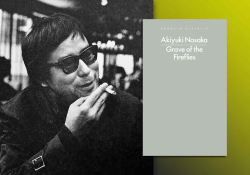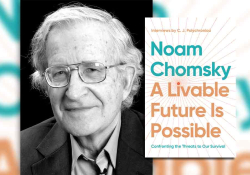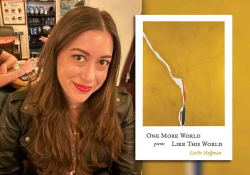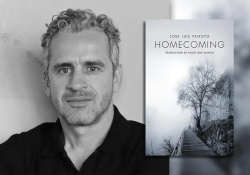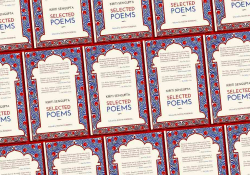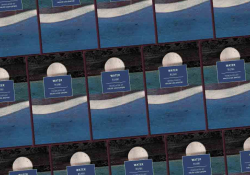Reassessing Exile and Diaspora: A Review of Exile and the Jews and Letters from Home
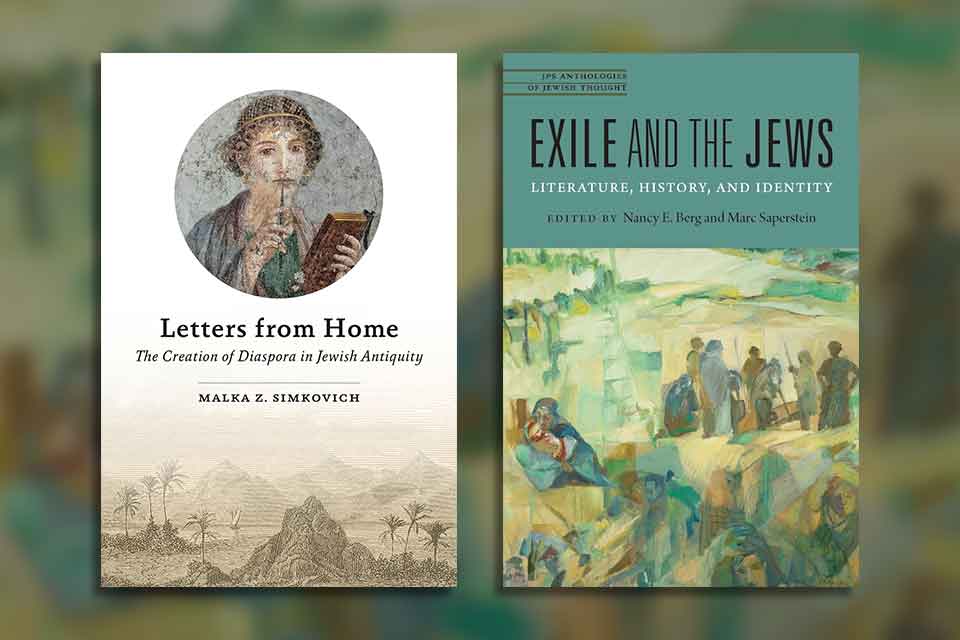
Nancy Berg and Marc Saperstein, Exile and the Jews: Literature, History, and Identity (Jewish Publication Society / University of Nebraska Press, 2024)
Malka Z. Simkovich, Letters from Home: The Creation of Diaspora in Jewish Antiquity (Eisenbrauns, 2024)
It’s no wonder that Jewish authors are drawn to a reassessment of exile and diaspora.
This most recent Gaza War has highlighted the profoundly different experience of living as a Jew in Israel and anywhere else, exposed deep divisions with (and within) American Jewry, and underscored the reality that a significant segment of Americans, especially young ones, are hostile not only to Israel’s prosecution of the war but to Israel’s existence. And some American Jews share that hostility.
Perhaps this reckoning is long overdue: the iconoclastic rabbinic scholar Jacob Neusner argued decades ago that the core American Jewish “myth” of destruction and redemption, Holocaust and Israel, did not match the American Jewish experience. The eminent historian Pamela Nadell has pressed this point, noting that events which occurred on two different continents cannot serve as an adequate anchor for American Jewish identity. Exile and the Jews offers an anthology of reflection about exile from the biblical period to the present day. Letters from Home presents a scholarly case for the complexity and relevance of diaspora in Jewish Antiquity, drawn from Judean and from diasporic texts, especially Alexandrian. Both books must be read as live documents, scholarly responses to pressing dilemmas and far from antiquarian.
The disparity between exile and diaspora emerges in the Hebrew Bible itself. While the Psalmist asks, “How can I sing the Lord’s song in a foreign land?” the prophet Jeremiah’s letter advises Israelites to “plant gardens, build houses, marry children” and, on a distinctly political note, “seek the peace of the city” to which God has exiled them (Jer. 28:9–16). Jeremiah uses the verb “exile,” but the gist of the prophet’s letter advises: hunker down and make the most of Bavel. Jeremiah’s assessment is dramatized in the next chapter in his showdown with the Israelite prophet Hananiah, who predicts a brief exile followed by redemption and return. Hananiah is sincere, he’s consistently titled prophet (navi), but he’s wrong. Even Jeremiah underestimated: Israel remained in Babylonian exile, which, until the 1950s, produced many of the most important documents (the Babylonian Talmud) and institutions (the first yeshivot) in Jewish history. What is the difference between exile and diaspora? In my view, mainly attitudinal. American Jews have usually considered themselves in diaspora. Russian Jews, before 1917, considered themselves in exile; they felt that way again as the Soviet Union reverted to anti-Semitism and placed real barriers to migration until 1990.
What is the difference between exile and diaspora? In my view, mainly attitudinal.
Exile and the Jews: Literature, History, and Identity began as a course at Washington University in Saint Louis, and it must have been a great one. The authors, as claimed, draw from an exceptionally wide range of sources: biblical, rabbinic, fictional, polemical, and autobiographical. Especially noteworthy is the inclusion of lots of poetry in many languages and drawn from many centuries. Given this cornucopia of materials, the question emerges: Does the structure yield a coherent anthology? The answer is unequivocally yes. The organization is both thematic (e.g., Exile in History, Exile and Holidays, God in Exile, Life in Exile, Language in Exile) and, within each of the ten thematic chapters, chronological. The collection works marvelously, and its adoption for a semester-length course would be worthwhile. There are many wonderful texts to choose from. (I counted 120 discrete entries—a suitably biblical number.)
Given this embarrassment of riches, I will comment only on three oddities. First, there is nothing exclusively Jewish about either exile or diaspora. While stretching toward universality makes sense, why include Saint Augustine and Edward Said, but not the many non-Jews who had lots to say about the Spanish expulsion (1492) or the European one? The Viennese Hugo Bettauer wrote a dystopian The City Without Jews (1924), which got him murdered. Thomas Mann called out the exile of Jews as a German tragedy. Second, inclusion is often at issue in an anthology; so is abridgment. Many of the entries, in this reviewer’s opinion, needed more introduction; no doubt these were provided in the classroom—they needed to be in the printed volume too. It may be churlish to complain about the brevity of a 273-page work, but some selections (e.g., Nachmanides, A. B. Yehoshua) were too short to give a sense of their arguments. My third qualm about Exile and the Jews involves the curious decision, intentional but unexplained, to largely avoid the term “diaspora.”
There is nothing exclusively Jewish about either exile or diaspora.
Fortunately, that peculiar elision is rectified in the monograph by Malka Z. Simkovich, Letters from Home: The Creation of Diaspora in Jewish Antiquity. Simkovich grapples up front with the negative valence of the term “exile” (i.e.,גלות / galut) in Jewish sources. She also notes that Jewish scholarship has moved away from the didactically Zionist “Jerusalem school” stance. However, rather than swing the pendulum too far in the direction of “diasporism,” she makes a subtle intervention. Although Jews have mainly lived elsewhere than Eretz Yisrael, often gladly, they have also nourished an affection toward the ancestral homeland. Simkovich notes that the Greek word διασπορά (diaspora) is not used widely in Second Temple literature as a noun; indeed, it is a neologism coined by the translators of the Septuagint (LXX). Yet the concept of diaspora was fully fleshed out in this period and demonstrable in letters to and from home (50–52).
Without detailing the various rhetorical techniques of these letters, which Simkovich spends much effort unpacking (e.g., pseudepigraphy, ventriloquy, mirroring), several of her important findings merit emphasizing. These include: “Diaspora” is a Septuagint term but a Judean invention. To wit, a claim that Jewish communities in Egypt and elsewhere, whatever their particularities, owe fidelity to the ancestral homeland. By and large, Simkovich finds those diaspora communities were willing to pay the Land of Israel that obeisance, without, however, invalidating their own local communities, intellectual interests, or political loyalties. Building on decades of scholarship delineating the geographic, ethnic, and ultimately religious components of Judaism, Simkovich takes this evolving and malleable term Ioudaismos a good step further than Jeremiah’s “build houses, plant trees.” Throughout “Jewish Antiquity,” a subtitle truly more fitting for this book than “Second Temple,” Jews practiced the ancestral customs of male circumcision, sabbath and holiday observance, dietary laws, prayer, and Torah study (46). In short, Jews acted more alike than different, whether they lived in Jerusalem or Alexandria, whether they spoke Aramaic or Greek. Jews never squared the circle of holding Jerusalem above their highest joy (Ps. 137) while living life comfortably in Alexandria’s Delta neighborhood. Simkovich argues that they never had to, and with the institution of rabbinic Judaism, those palaces of place and palaces of time each served as home.
Jews acted more alike than different, whether they lived in Jerusalem or Alexandria, whether they spoke Aramaic or Greek.
Readers uninterested in historiography may skip my final thought. In 1991 Todd Endelman published “The Legitimization of the Diaspora Experience in Recent Jewish Historiography,” which took issue with overly roseate views of Jewish modernity. Endelman argued that drift and disaffiliation were underestimated factors. Focusing especially on the early modern period, Adam Teller demonstrates that the post-traumatic effects of expulsions and pogroms on the survivors and their redeemers cast a darker light on these centuries. Neither Endelman nor Teller wish to return to the concept of Jewish history as torment, which prevailed before Salo Baron’s attacks on “the lachrymose conception of Jewish history.” Nevertheless, as we have passed the second anniversary of the massacres on October 7, 2023, I see plenty of signs of Jewish PTSD. (For a glimpse into Palestinian, see WLT’s “Gaza Voices” issue.) These two very different books are both wonderful but share an underlying optimism that may already be passé.
University of Oklahoma
Sukkot 5786


